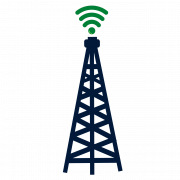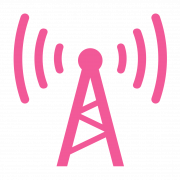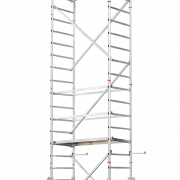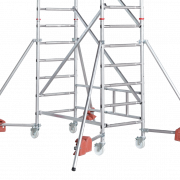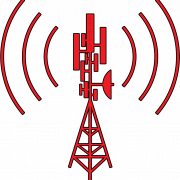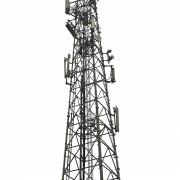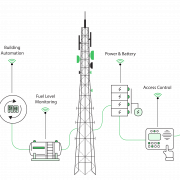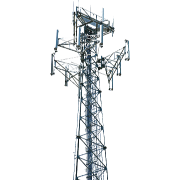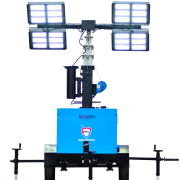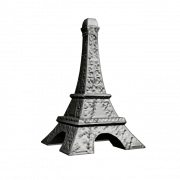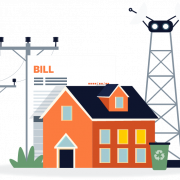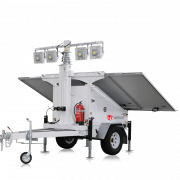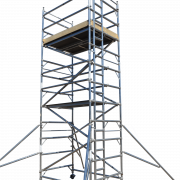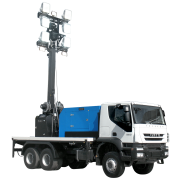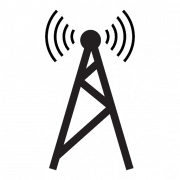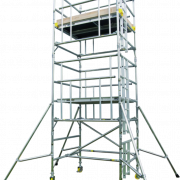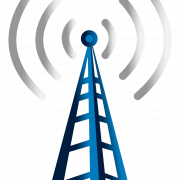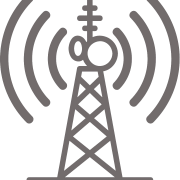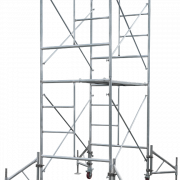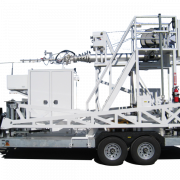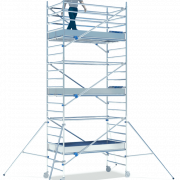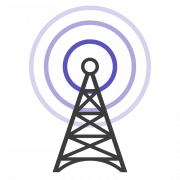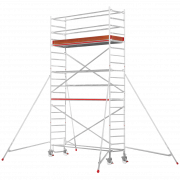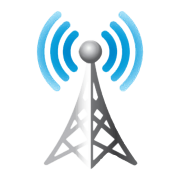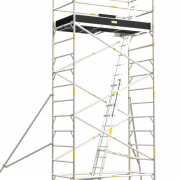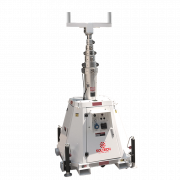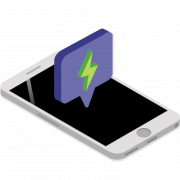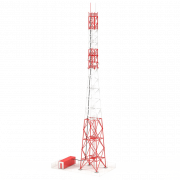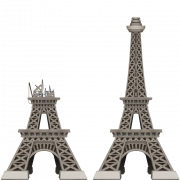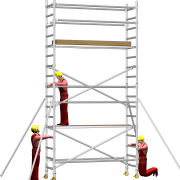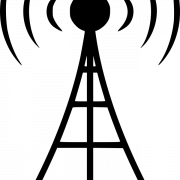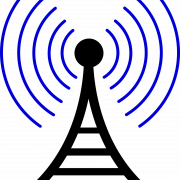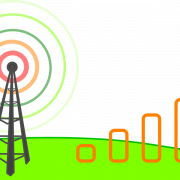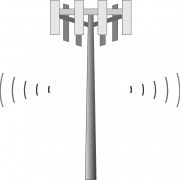Download top and best high-quality free Mobile Tower PNG Transparent Images backgrounds available in various sizes. To view the full PNG size resolution click on any of the below image thumbnail.
License Info: Creative Commons 4.0 BY-NC
A cellular network, also known as a mobile network, is a communication system in which the connectivity between end nodes is wireless. The network is divided into “cells,” each of which is serviced by at least one fixed-location transceiver (typically three cell sites or base transceiver stations). These base stations offer network coverage to the cell, which may be utilized for voice, data, and other forms of content delivery. To minimize interference and ensure assured service quality inside each cell, each cell generally utilizes a distinct range of frequencies than nearby cells.
When these cells are linked together, they offer radio coverage across a large geographic region. This allows a large number of portable transceivers (e.g., mobile phones, tablets, and laptops with mobile broadband modems, pagers, and so on) to communicate with each other as well as fixed transceivers and telephones anywhere in the network via base stations, even if some of the transceivers are moving through multiple cells during transmission.
The following are some of the advantages of cellular networks:
Since the same frequency may be utilized for many lines as long as they are in separate cells, it has more capacity than a single big transmitter.
Although cell towers are closer together, mobile devices require less power than a single transmitter or satellite.
Additional cell towers may be added endlessly and are not restricted by the horizon, providing a larger coverage area than a single terrestrial transmitter.
Voice and data cellular networks have been implemented by major telecommunications carriers over the majority of the world’s populated geographical area. This enables mobile phones and mobile computing devices to connect to the public switched telephone network and have access to the Internet. Private cellular networks can be utilized for research as well as big companies and fleets, such as dispatch for local police departments or a taxicab firm.
A land area to be served with radio service is split into cells in a pattern based on topographical and reception characteristics in a cellular radio system. Although hexagonal cells are the most common, these cell patterns are generally in the shape of regular forms such as hexagons, squares, or circles. Multiple frequencies (f1–f6) have been given to each of these cells, with matching radio base stations. The set of frequencies can be repeated in other cells as long as they are not reused in adjacent cells, as this would result in co-channel interference.
The mobile communication switching system developed by Amos Joel of Bell Labs allowed multiple callers in a given area to use the same frequency by switching calls to the nearest available cellular tower having that frequency available, resulting in increased capacity in a cellular network compared to a network with a single transmitter. Because a given radio frequency may be utilized in a different region for an unrelated message, this method is practical. A single transmitter, on the other hand, can only handle one broadcast per frequency. There will invariably be some interference from the signals of other cells that utilize the same frequency. As a result, in a typical frequency-division multiple access (FDMA) system, there must be at least one cell gap between cells that repeat the same frequency.
Download Mobile Tower PNG images transparent gallery.
- Mobile Tower Communication PNG Free Image
Resolution: 640 × 1280
Size: 167 KB
Image Format: .png
Download
- Mobile Tower Communication PNG File
Resolution: 1069 × 1069
Size: 53 KB
Image Format: .png
Download
- Mobile Tower PNG Free Image
Resolution: 1280 × 1280
Size: 121 KB
Image Format: .png
Download
- Mobile Tower Communication PNG HD Image
Resolution: 1800 × 1119
Size: 66 KB
Image Format: .png
Download
- Mobile Tower Communication
Resolution: 642 × 1280
Size: 685 KB
Image Format: .png
Download
- Mobile Tower Communication PNG Pic
Resolution: 1280 × 853
Size: 594 KB
Image Format: .png
Download
- Mobile Tower PNG
Resolution: 992 × 1015
Size: 87 KB
Image Format: .png
Download
- Mobile Tower Cellphone
Resolution: 860 × 1850
Size: 836 KB
Image Format: .png
Download
- Mobile Tower PNG File
Resolution: 5833 × 2917
Size: 353 KB
Image Format: .png
Download
- Mobile Tower Cellphone PNG
Resolution: 900 × 1072
Size: 376 KB
Image Format: .png
Download
- Mobile Tower Communication PNG Download Image
Resolution: 720 × 800
Size: 282 KB
Image Format: .png
Download
- Mobile Tower PNG HD Image
Resolution: 750 × 650
Size: 159 KB
Image Format: .png
Download
- Mobile Tower Communication PNG High Quality Image
Resolution: 851 × 551
Size: 30 KB
Image Format: .png
Download
- Mobile Tower Communication PNG Images
Resolution: 800 × 800
Size: 111 KB
Image Format: .png
Download
- Mobile Tower Cellphone PNG Image
Resolution: 1500 × 1967
Size: 328 KB
Image Format: .png
Download
- Mobile Tower Communication PNG Image File
Resolution: 900 × 900
Size: 504 KB
Image Format: .png
Download
- Mobile Tower PNG Pic
Resolution: 820 × 512
Size: 58 KB
Image Format: .png
Download
- Mobile Tower PNG Download Image
Resolution: 714 × 1011
Size: 487 KB
Image Format: .png
Download
- Mobile Tower Cellphone Transparent
Resolution: 880 × 1217
Size: 218 KB
Image Format: .png
Download
- Mobile Tower Cellphone PNG Clipart
Resolution: 900 × 960
Size: 208 KB
Image Format: .png
Download
- Mobile Tower PNG High Quality Image
Resolution: 648 × 938
Size: 341 KB
Image Format: .png
Download
- Mobile Tower Cellphone PNG Free Download
Resolution: 995 × 600
Size: 421 KB
Image Format: .png
Download
- Mobile Tower PNG Images
Resolution: 753 × 628
Size: 166 KB
Image Format: .png
Download
- Mobile Tower PNG Image File
Resolution: 1953 × 2400
Size: 36 KB
Image Format: .png
Download
- Mobile Tower PNG Photo
Resolution: 700 × 909
Size: 72 KB
Image Format: .png
Download
- Mobile Tower Communication PNG Photo
Resolution: 1100 × 800
Size: 16 KB
Image Format: .png
Download
- Mobile Tower PNG Image
Resolution: 1280 × 1189
Size: 596 KB
Image Format: .png
Download
- Mobile Tower Communication PNG Image HD
Resolution: 900 × 900
Size: 278 KB
Image Format: .png
Download
- Mobile Tower Communication PNG File Download Free
Resolution: 640 × 800
Size: 88 KB
Image Format: .png
Download
- Mobile Tower Communication PNG
Resolution: 1000 × 1000
Size: 329 KB
Image Format: .png
Download
- Mobile Tower Communication PNG Image
Resolution: 1446 × 1446
Size: 105 KB
Image Format: .png
Download
- Mobile Tower Communication Transparent
Resolution: 800 × 800
Size: 181 KB
Image Format: .png
Download
- Mobile Tower Cellphone PNG Picture
Resolution: 1852 × 1019
Size: 83 KB
Image Format: .png
Download
- Mobile Tower Transparent
Resolution: 1411 × 702
Size: 202 KB
Image Format: .png
Download
- Mobile Tower
Resolution: 1067 × 2400
Size: 46 KB
Image Format: .png
Download
- Mobile Tower PNG Clipart
Resolution: 1080 × 1259
Size: 503 KB
Image Format: .png
Download
- Mobile Tower Cellphone PNG Free Image
Resolution: 660 × 980
Size: 54 KB
Image Format: .png
Download
- Mobile Tower Communication PNG Clipart
Resolution: 1090 × 1280
Size: 251 KB
Image Format: .png
Download
- Mobile Tower PNG Free Download
Resolution: 960 × 475
Size: 51 KB
Image Format: .png
Download
- Mobile Tower Communication PNG Free Download
Resolution: 960 × 600
Size: 138 KB
Image Format: .png
Download
- Mobile Tower PNG Picture
Resolution: 1280 × 906
Size: 88 KB
Image Format: .png
Download
- Mobile Tower Communication PNG Picture
Resolution: 934 × 534
Size: 37 KB
Image Format: .png
Download


